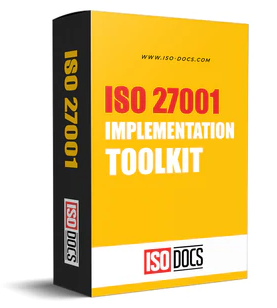Information And Asset Management In ISO 27001?
Introduction
In the current scenario of even digitally inclined organizational workflows, information and asset management emerges as the topmost domain in safeguarding enterprises from cyber threats, data leaks, and, ultimately, financial loss. Under the ISO 27001 Information Security Management System (ISMS), organizations are supposed to identify, classify, and protect all information assets put in place for the smooth running of business operations. Things that need protection fall into the category of customer data and IPs, laptops, cloud servers, and software applications. Unfortunately, many organizations pride themselves and concentrate only on IT assets; however, ISO 27001 asset management covers elements such as physical, digital, human, and even reputational assets.

What Is Information And Asset Management in ISO 27001?
In ISO 27001 terms, Information and Asset Management pertains to a systematic action for identifying, classifying, and securing all information assets critical to an organization’s operations. These assets exceed hardware and software to embrace data, employees, facilities, and some third parties, all of which constitute the business value chain.
Some of the Key Benefits of Effective Information and Asset Management:
-
Business Continuity Assurance – Safeguarding information against unauthorized access, accidental disclosure, or data loss will minimize interruptions to either smooth organization flow or business continuity.
-
Protection of Intellectual Property and Sensitive Data – Confidential information, trade secrets, customer details, etc., are shielded from theft, conspiracy, or misuse.
-
Support for ISO 27001 Annex A Controls (A.5 and A.8) – While Annex A.5 calls for strong information security policies, Annex A.8 ensures that adequate asset management practices are in place to properly document and assign ownership to all resources.
- Trust with Stakeholders – Properly demonstrating asset management gives confidence to clients, regulators, and partners that the organization is serious about data protection and its compliance.
Why Information And Asset Management Matters In ISO 27001?
An asset management process in Good Standing is not merely about NGO compliance-it is about protecting your business back-bone.
Benefits of Asset Management:
-
Regulatory compliance – Assists organizations in complying with GDPR, HIPAA, SOC 2, and several other laws, etc.
-
Risk mitigation – Lessens cyber risks, threats from insiders, or human error.
-
Operational efficiency – Diligent ownership and accountability help to alleviate duplicity and inefficiencies.
-
Incident response – Speeds up the detection, reporting, and containment of security incidents.
- Client confidence – Clients can see that you approach information security in a professional manner.
Best Practices For Effective Information And Asset Management
Organizational business according to the prescribed methods will maximize security and ISO 27001 compliance:
-
Centralized Asset Register: Maintain an up-to-date inventory of all information assets—hardware, software, data, and services—in a centralized register. This enables tracking of every asset through assignment of ownership in a manner that is easy to review during an audit.
-
Use Automated Tools for Asset Discovery and Classification: Automated solutions help identify shadow IT, classify sensitive data, and ensure assets are labeled according to their criticality. This reduces manual errors and strengthens overall asset visibility.
-
Learn and Train Employees Periodically about Their Role in Handling Sensitive Information: Staff awareness is critical to preventing any accidental breaches from occurring. Training programs should include the learning of how data should be handled, the classification of data, and reporting of anything suspicious, which goes a long way in line with ISO 27001 best practices.
-
Integrate Asset Management with Risk Assessment: Integrating asset management with risk assessment gives confidence that the critical assets are receiving proper protection. This links with the Annex A controls and will ensure that security is prioritized based on areas that matter.
-
Review Access by Suppliers and Third Parties: Usually, vendors and partners have access to sensitive data, hence a timely review of suppliers' permissions and security practices, preventing the external risk from becoming a compliance problem.
- Periodic Audits Against ISO 27001 Annex A Controls: Periodically conducting internal audits that check that the processes in place for asset management also respect Annex A.5 and A.8 requirements. This is performed to assure a never-ending process of hovering improvement and readiness for certification audits.
Conclusion
Effective information and asset management form the core of compliance with ISO 27001. Maintaining in-depth asset inventories with ownership and classification of assets under degrees of risk is key for an organization in enforcing appropriate security measures, thereby significantly minimizing risks and ensuring data security.


